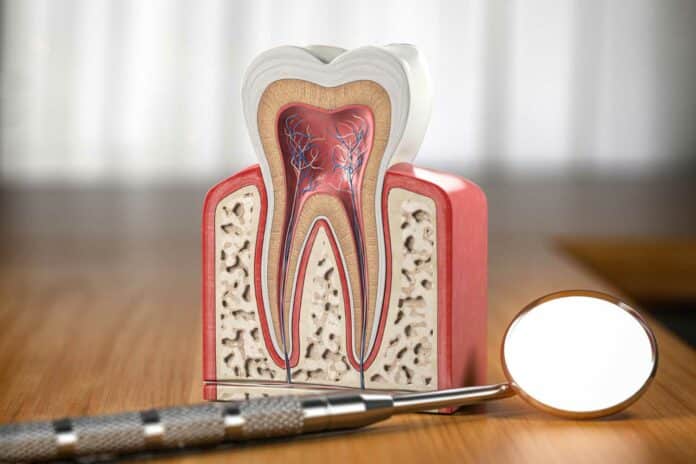Researchers compared two types of stem cells from wisdom teeth. They discovered significant differences in how they can turn into other cell types. They used advanced analysis to study dental pulp stem cells and periodontal ligament stem cells, finding unique characteristics. This detailed study, published in the Journal of Dental Research, reveals the complete genetic information of these stem cells and their potential to transform into different cell types.
“Dental pulp and periodontal ligament stem cells can potentially become any cell in the body,” explained ADA Forsyth Scientist Alpdogan Kantarci.
In their study led by Kantarci and UNC biostatistician Di Wu, the team found seven gene clusters in these stem cells, reflecting different stages of development. Four groups were similar in both types, while three were uniquely different. Periodontal ligament stem cells were more like cells that form connective tissue. In contrast, dental pulp stem cells had a higher potential to become bone cells.
Dr. Kantarci said, “This new information on the specific genetic composition and mechanisms of differentiation in the dental pulp and periodontal ligament stem cells will generate a new era of work in regenerative medicine. We could select a stem cell-based on its distinct properties to create targeted regenerative dental tissue repair and other regenerative therapies.”
ADA Forsyth scientists extracted stem cells from teeth, skipping the usual culturing step. These unfrozen cells were sent to UNC for analysis. Additionally, the team turned the same cells into known types like fibroblasts and osteoblasts.
They used advanced methods to compare the stem cells’ ability to become these cell types. Results from both bulk RNA sequencing and single-cell transcriptomics matched. Dr. Kantarci shared, ‘Before, people thought stem cells were very similar or different. Now, we see the potential to use specific features for better and targeted regenerative therapies.
In conclusion, the comprehensive genome mapping of oral stem cells has unveiled a wealth of information with significant implications for regenerative medicine. The study’s approach, focusing on authentic genetic characteristics and differentiation potential, provides a solid foundation for future advancements in tailored regenerative therapies.
Journal reference:
- Y. Yang, T. Alves, D. Wu et al., Single-Cell Transcriptomic Analysis of Dental Pulp and Periodontal Ligament Stem Cells. Journal of Dental Research. DOI: 10.1177/00220345231205283.
